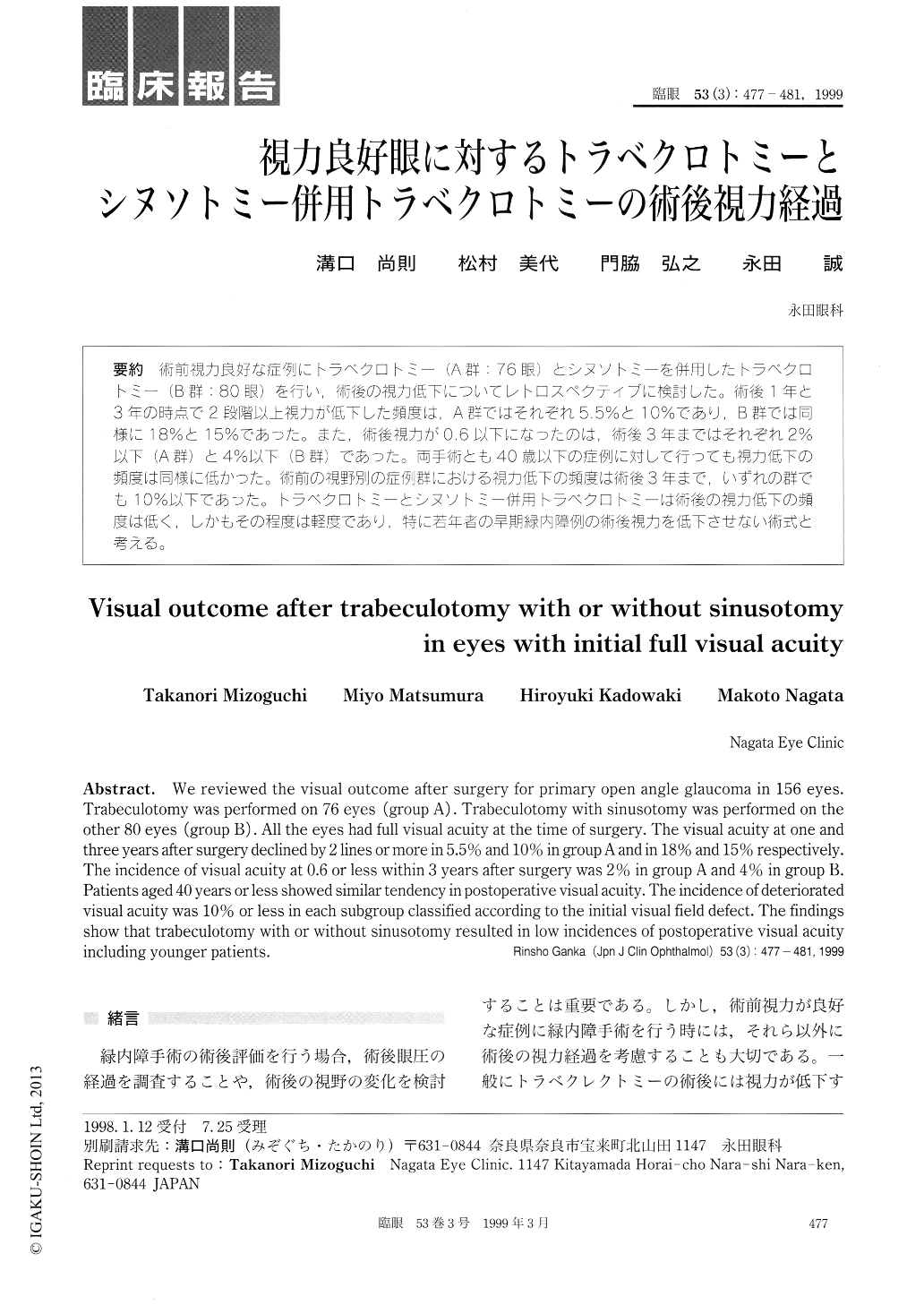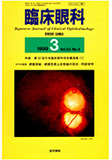Japanese
English
- 有料閲覧
- Abstract 文献概要
- 1ページ目 Look Inside
術前視力良好な症例にトラベクロトミ—(A群:76眼)とシヌソトミーを併用したトラベクロトミー(B群:80眼)を行い,術後の視力低下についてレトロスペクティブに検討した。術後1年と3年の時点で2段階以上視力が低下した頻度は,A群ではそれぞれ5.5%と10%であり,B群では同様に18%と15%であった。また,術後視力が0.6以下になったのは,術後3年まではそれぞれ2%以下(A群)と4%以下(B群)であった。両手術とも40歳以下の症例に対して行っても視力低下の頻度は同様に低かった。術前の視野別の症例群における視力低下の頻度は術後3年まで,いずれの群でも10%以下であった。トラベクロトミーとシヌソトミー併用トラベクロトミーは術後の視力低下の頻度は低く,しかもその程度は軽度であり,特に若年者の早期緑内障例の術後視力を低下させない術式と考える。
We reviewed the visual outcome after surgery for primary open angle glaucoma in 156 eyes. Trabeculotomy was performed on 76 eyes (group A) . Trabeculotomy with sinusotomy was performed on the other 80 eyes (group B) . All the eyes had full visual acuity at the time of surgery. The visual acuity at one and three years after surgery declined by 2 lines or more in 5.5% and 10% in group A and in 18% and 15% respectively. The incidence of visual acuity at 0.6 or less within 3 years after surgery was 2 % in group A and 4% in group B. Patients aged 40 years or less showed similar tendency in postoperative visual acuity. The incidence of deteriorated visual acuity was 10% or less in each subgroup classified according to the initial visual field defect. The findings show that trabeculotomy with or without sinusotomy resulted in low incidences of postoperative visual acuity including younger patients.

Copyright © 1999, Igaku-Shoin Ltd. All rights reserved.


